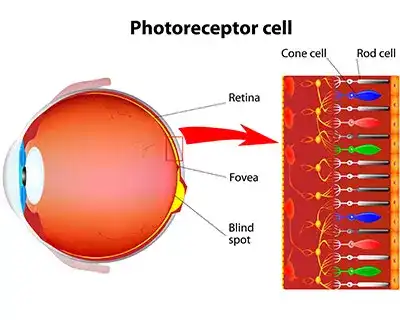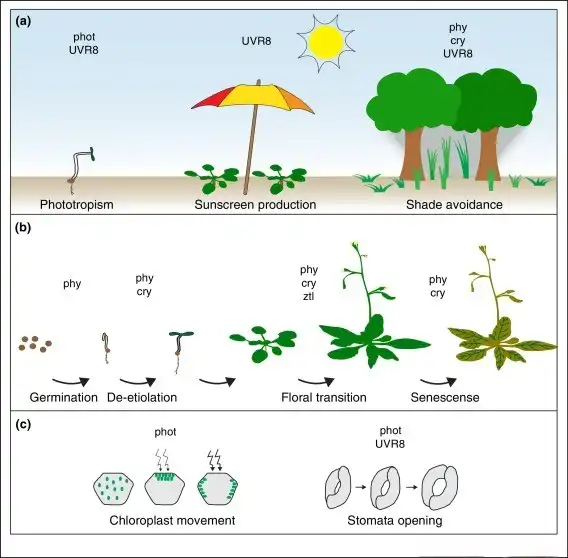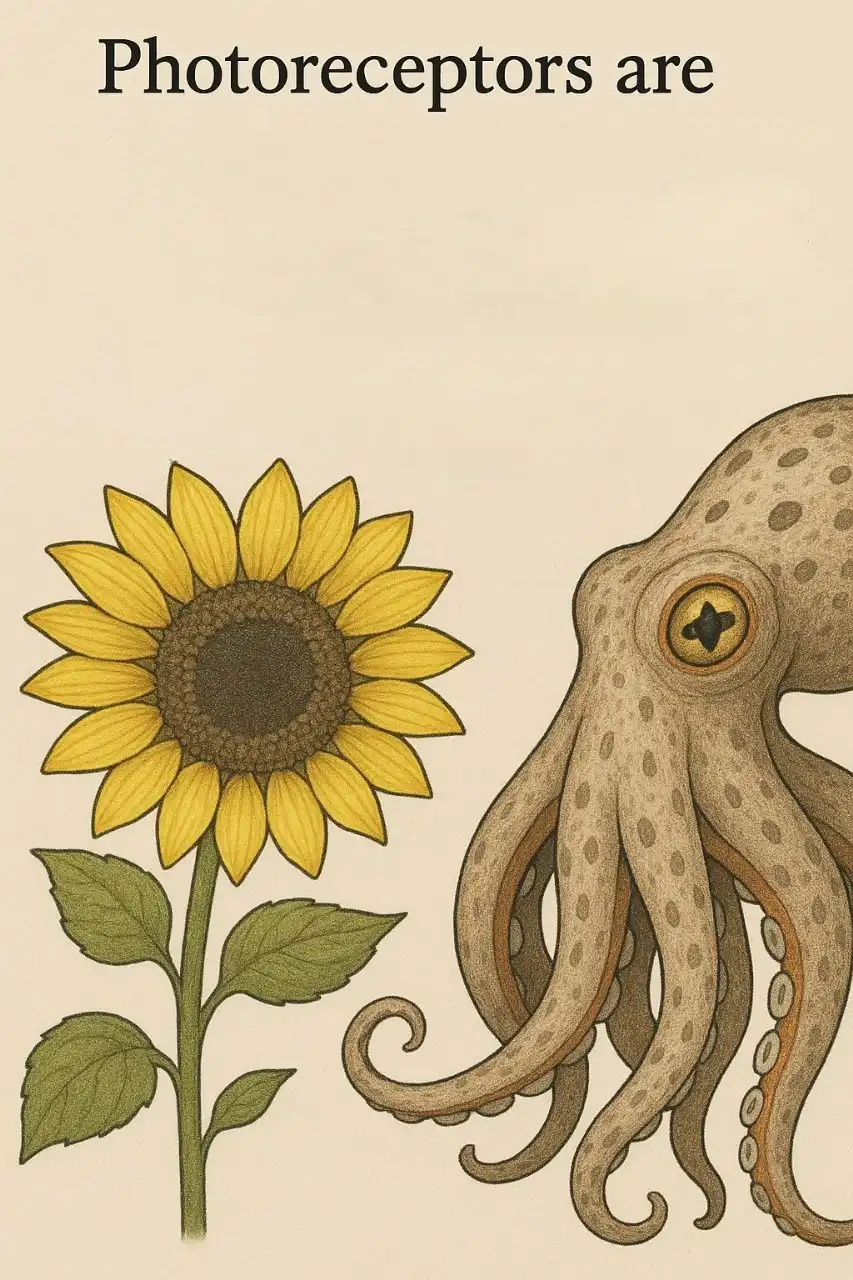Light is essential for life on Earth. It helps plants grow, guides animals, and influences our lives. But how do living things detect light? They use special tools called photoreceptors, which act like tiny light sensors. These photoreceptors allow organisms to sense and respond to light in various ways.

What are photoreceptors?
Photoreceptors are special proteins found in cells that detect light. They help organisms understand their light environment. When light hits these photoreceptors, they change in a way that starts a response in the organism. This response can be growing towards light, changing colour, or adjusting daily rhythms.

Photoreceptors in plants
Plants can’t move like animals, but they can still sense light. They have photoreceptors that help them detect light’s presence, direction, and type. This ability is crucial for their survival.

Types of Plant Photoreceptors
Plants have different photoreceptors to detect various light wavelengths:
- Phytochromes: These detect red and far-red light. They help plants know when to flower and when seeds should sprout.

- Cryptochromes and Phototropins: These sense blue and ultraviolet light. They control how plants grow towards light and when leaves open or close.

Using these photoreceptors, plants can adjust their growth to get the most light for photosynthesis. For example, they can grow taller if they’re in the shade or turn their leaves to face the sun.
Photoreceptors in animals
Animals also rely on photoreceptors, mainly for vision. In animals, photoreceptors are usually in the eyes and detect light to create images. There are two main types:
- Rods: These are sensitive to dim light and help with night vision.
- Cones: These detect bright light and colours, helping animals see during the day and distinguish different hues.

Some animals have extra photoreceptors for special tasks. For example, certain insects have photoreceptors that detect ultraviolet light, helping them find food or mates.
Non-Visual Photoreception
Not all photoreceptors are for seeing. Some help regulate body clocks or detect light without forming images. For instance, many animals have photoreceptors in their skin that help control colour changes or body patterns. This is seen in creatures like octopuses and some fish.

Why are photoreceptors important?
Photoreceptors are vital because they help organisms interact with their environment. They allow plants to grow towards light, animals to see, and many creatures to keep their daily rhythms in sync with the day-night cycle. Without photoreceptors, life would struggle to adapt to the changing light conditions on Earth.

Conclusion
Photoreceptors are nature’s light sensors, helping living things detect and respond to light. Whether it’s a plant turning towards the sun or an animal seeing its surroundings, photoreceptors play a key role in the survival and behaviour of organisms.
For more interesting articles, please visit www.kidzherald.com





